Barney Bubbles for the Psychedelic Furs
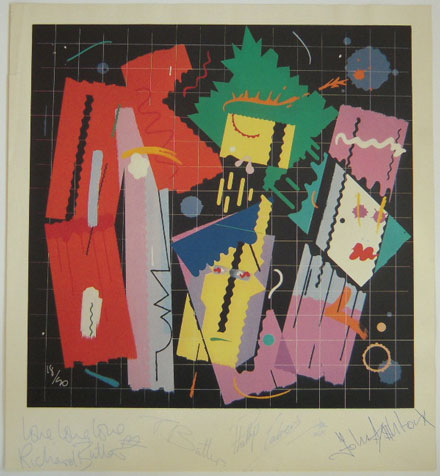
Signed promotional poster for Danger, 1982. © H. Thompson/Reasons 2009.

Credits, Mirror Moves, The Psychedelic Furs, CBS, 1984.
Barney Bubbles’ association with the great British post-punk band The Psychedelic Furs may not have lasted all that long yet it proved to be fertile, particularly when it came to his friendship and working relationship with the group’s driving force and frontman Richard Butler.
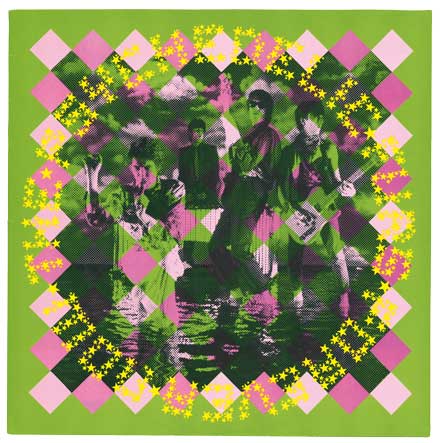
Front cover, Forever Now, The Psychedelic Furs, CBS UK, 1982.
These days an exhibiting painter, Butler attended Epsom School of Art & Design and handled the group’s visuals, creating the artwork for the group’s second album Talk Talk Talk (adding the words “After Andy Warhol” to the credit) before the collusion with Barney on the band’s 1982 release Forever Now and it’s attendant singles.
This paid dividends in the form of excellent and typographically challenging artwork which may have bamboozled the US record company but impressed and endeared Barney to the group: at that time Richard and his bass-playing brother Tim, guitarist John Ashton and ex-Birthday Party drummer Phil Calvert.
On 1984 album Mirror Moves, their first release after Barney’s death, the Furs – and young designer Al McDowell – tipped their hat to his memory in the credits with the words “After Barney Bubbles”.
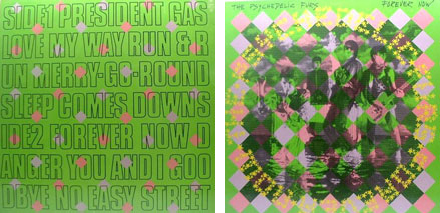
Back and front, Forever Now, CBS Netherlands, 1982. Note hand-written band name and title added to front cover.
We’re indebted to A&R legend Howard Thompson – rightly lauded these days for his digital radio station North Fork Sound - for the back-story and some of these images, including the rare and never previously published promotional poster for the single Danger.

Barney Bubbles painting his portrait of Richard Butler 1983. © Reasons 2009.
“I met Barney four or five times; he seemed like a lovely, if some times troubled fellow,” says Howard. “When I was at Island Records in the mid 70s, I instigated the distribution deal for Stiff so I think that must be where we first came across each other.”
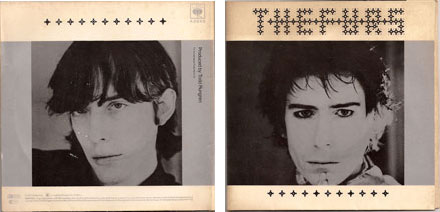
Back and front cover, Love My Way 7”, The Psychedelic Furs, CBS UK, 1982.
Moving to CBS, Howard worked with the Furs on their first two albums, and then transferred to the US in early 1982. At this time, as we know, Barney had started to take his portfolio around various larger record labels, encouraged by friends such as photographer Brian Griffin.
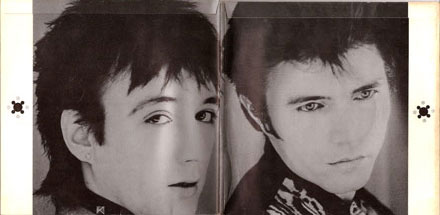
Inner gatefold, Love My Way 7”, The Psychedelic Furs, CBS UK, 1982.
Commissioned by Butler, Barney’s design for the front of Forever Now applied a greater sense of form to the Warhol-esque screens used on earlier Furs’ releases with an organised mosaic of tiles in flourescent green and pink.
Griffin’s dramatic monochrome band portrait is filtered through this prism and framed by Barney’s circular logo created from yellow stars.
On the back the song titles run into each other in imposing capitals decorated with tessellated pink rectangles.

Back and front cover, Love My Way 12”, The Psychedelic Furs, CBS UK, 1982.
CBS’ enhanced budget, and the industry trend towards multi-format releases, enabled Barney to go to town on the singles.
Love My Way appeared with two 7� sleeves – one a gatefold – and a 12�. The latter compiled Griffin’s head and shoulder shots on the front.
The B-side song is Aeroplane.“On the back is a ‘xerox’ of the parts to a model aeroplane kit; so Barney, isn’t it?” says Howard.
The Love My Way sleeves were subjected to a gelatin-silver process (which embeds metallic silver in the coating). These scans aren’t the best, but silver dots can be indentified as an element of the five tangent circle motifs which appear enlarged on the gatefold inner.
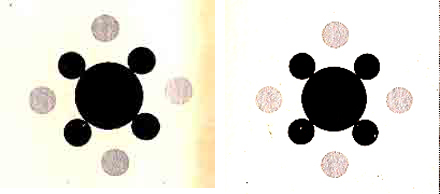
Motifs, Love My Way 7” gatefold, The Psychedelic Furs, CBS UK, 1982.
The decorations – see also the three interlocked circles which Barney added to certain FBeat releases – are also arranged in repeat as quasi-chemical structures which convey the more user-friendly name “The Furs” as well as accommodating lettering which spells out the band’s full name and the song titles.

![]()
![]()
The front cover of second single Danger is one of Barney’s paintings. Typical of his private work of this period, apparently random squiggles and abstract shapes deliver the physiognomy of the four musicians. Earlier covers are evoked – 1977’s Music For Pleasure by The Damned, 1981’s Me & The Boys by The Inmates – and references are made; for example the “paint-pot” ring also appeared on artwork and badges for Do it Yourself by Ian Dury &
.
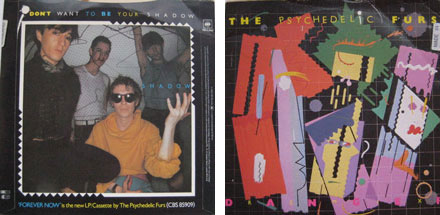
Back and front cover, Danger 12”, The Psychedelic Furs, CBS UK, 1982.
The Danger cover was printed as a poster for circulation to the media in an edition of just 90. ‘I have number 18,” says Howard. “The signatures read: ‘Love Love Love Richard Butler (with a drawing of a heart) T. Butler Phillip Calvert xx John A$hton‘.”

Left: Front cover, US release of Forever Now, Columbia, 1982. Left: Inner, Mirror Moves, CBS, 1984.
Barney’s intricate artwork appears to have been too much for the US record label Columbia. “In their infinite wisdom, ‘marketing’ chose to use a different, non-BB cover for the album and, of course, they released the singles in generic bags,” says Howard. “Twats.”
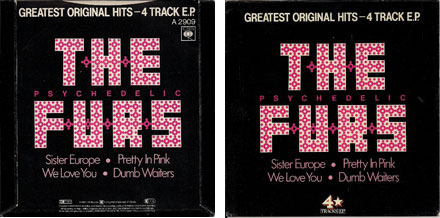
Back and front, 4Star EP, Columbia, 1982.
Chasing the youth market (which picked up on the group when they re-recorded early track Pretty In Pink for the John Hughes movie of the same name) CBS appropriated and bowdlerised Barney’s artwork for the grab-bag 4 Star EP.
Butler was responsible for the design for 1984’s Mirror Moves in conjunction with Al McDowell, who has long proclaimed a debt to Barney’s work – his design company Rocking Russian was in part named after Barney’s demonstrations that contemporary design could be invigorated by engaging with the work of the Constructivists.
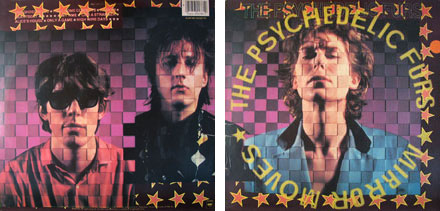
Back and front, Mirror Moves, Columbia, 1984.
McDowell formed offshoot record sleeve design company DaGama with Tomato’s John Warwicker and, with Butler, produced a sleeve which drew on the elements created by Barney: the circular album title logo and arrangements of stars which are overlaid with tiled portraits, again by Griffin.

The layout of the song titles and credits follows Barney’s back cover of Forever Now and, right at the end, there is the special tribute to their departed friend and design hero.
